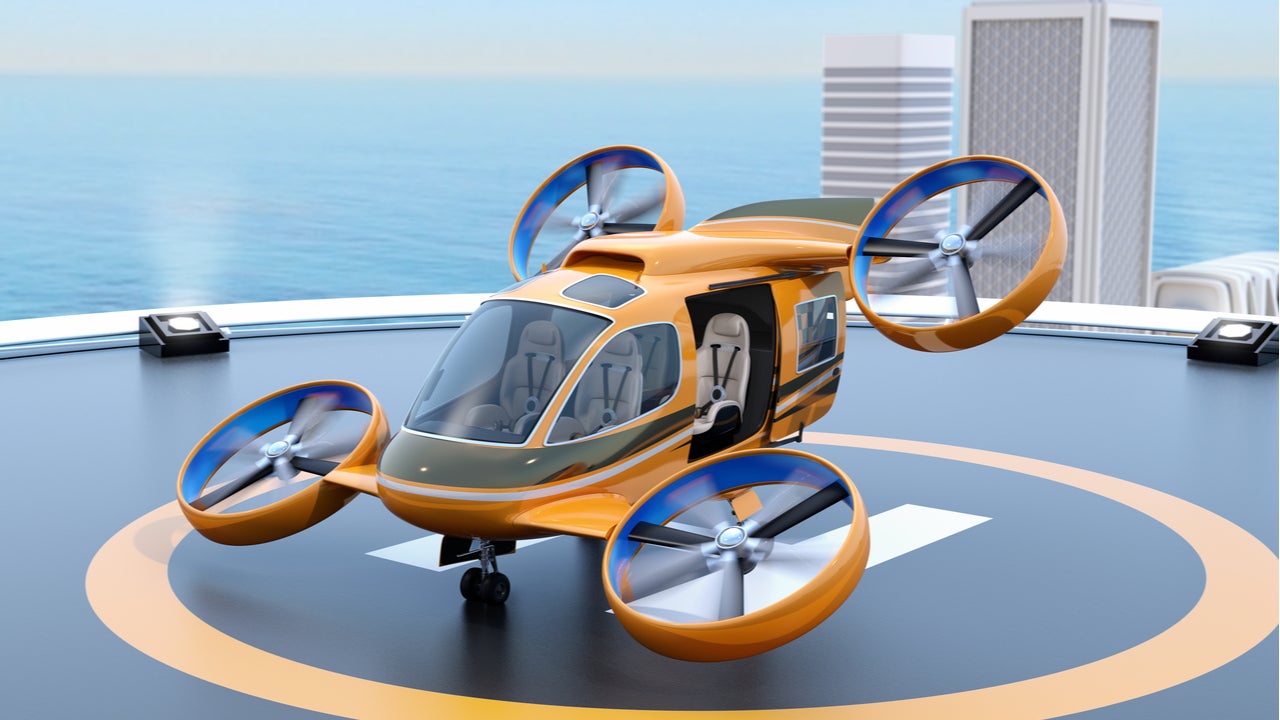
Recent developments have given cause for optimism on the growth of the urban air mobility (UAM) market. Earlier this month, Michael Cole, chief executive of European operations at Hyundai, claimed that flying cars would be a reality by 2030.
In 2020, Hyundai Air Mobility partnered with Urban-AirPort to develop UAM infrastructure. In June 2021, Eve Urban Air Mobility Solutions – an electric vehicle take-off and landing (eVTOL) aircraft developer – announced its partnership with software company Ascent to help develop the UAM market in the Asia Pacific region. AirCar, the brainchild of Slovakian eVTOL company Klein Vision, took its first 35-minute flight between Nitra and Bratislava in Slovakia on 28 June 2021.
UAM could help cut congestion in cities and reduce emissions. According to a 2020 EU report, the combined population of European cities will exceed 340 million citizens by 2030. As populations worldwide grow, sustainable modes of transport will be crucial.
Recovery needed for UAM to become viable
However, there are stumbling blocks for the development of this market. Morgan Stanley has predicted that the market for autonomous urban aircraft could be worth $1tn by 2040, considering technological advances and accelerated investment in the industry. However, this is a revision of their previous 2019 forecast of $1.5tn by 2030.
There are several dependencies for the UAM market to become viable, particularly within the next decade.
The UAM market partly depends on how quickly companies and countries can recover from the economic fallout of Covid-19. The pandemic will thin the herd in terms of companies that can provide the expertise to develop this sector. Big players in the aviation industry like Boeing and Airbus will roll back future projects to focus on their core business.
How well do you really know your competitors?
Access the most comprehensive Company Profiles on the market, powered by GlobalData. Save hours of research. Gain competitive edge.

Thank you!
Your download email will arrive shortly
Not ready to buy yet? Download a free sample
We are confident about the unique quality of our Company Profiles. However, we want you to make the most beneficial decision for your business, so we offer a free sample that you can download by submitting the below form
By GlobalDataNASA has identified infrastructure as one of the leading challenges to UAM. Investment in infrastructure will be critical and expensive. Urban areas where mobility issues are particularly are a blank canvas for urban air mobility infrastructure.
Varon Vehicles, a UAM start-up focusing on infrastructure, aims to break into the Latin American market, starting with Colombia. However, Latin America has been one of the regions worst hit economically by the pandemic, with no signs of improvement in the near future. As a result, expensive UAM projects in Latin American countries are unlikely to receive enough government investment.
Regulation needs to be standardized
Regulation is another crucial issue. Drones, an important component of UAM, have been heavily regulated from the outset due to safety concerns. Countries already find it hard to regulate air traffic for drone use, and some have banned them altogether, citing safety and privacy concerns. Regulation will have to be standardized for UAM to become commercially viable in heavily populated areas.
Market substitutes will initially out-compete air taxis. This will primarily be due to cost. German start-up Volocopter developed the first commercially licensed electrically powered air taxi, which has room for one passenger and will cost roughly $300 per flight. Consumers will opt for cheaper and more convenient alternatives until air taxis become mainstream.
Demand for air taxis and delivery drones is also reliant on public sentiment. Consumers will need proven safety records and transparent regulation. Unmanned flying machines, the cornerstone of the UAM market, will rely on unmanned traffic management (UTM).
In recent years, crashes and fatalities have lowered confidence in this technology. Boeing’s Passenger Air Vehicle (PAV), its urban air mobility prototype, crashed on 4 July 2020. Safety concerns will slow down initial demand for these new technologies.
While there is cause for optimism, the UAM market is unlikely to take off until 2030 at the earliest. The regulatory and economic hurdles that the industry faces will inevitably put the brakes on its development over the next decade. It will take a lot longer than a decade for UAM to become mainstream in cities across the globe.





Related Company Profiles
Morgan Stanley
Volocopter GmbH